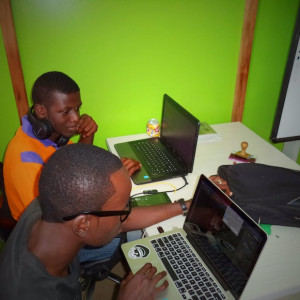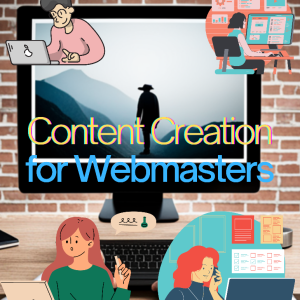While some people thrive on working as a freelancer, others underestimate the leap from working within an office to the freedom of being your own boss. Before entering the life of a freelancer, Frictionless Freelancing by Aaron Mahnke should become your bible. Within Frictionless Freelancing, Aaron reveals years of valuable secrets to diminish the friction that can prevent you reaching your true freelancing potential. Rather than spending many frustrating years tweaking your business practices, Aaron uncovers and teaches you the tricks to the freelancing trade.
Frictionless Freelancing will assist you to:
- Perfect your productivity methods
- Create successful client interactions
- Manage your finances
In an interview with one of our editors, Job Stock, Aaron has generously shared his thoughts about the freelancing trade and some of his best kept freelancing secrets.
Frictionless Freelancing interview with Aaron Mahnke
Job Stock: What is the biggest change you have observed in the world of self-employment during the last five years?
AM: I think the biggest challenge in the last five years, both in my own business and in the freelance world at large has been the recession we’ve experienced in the US. My business is a business-to-business service, and so I’ve watched businesses around me trim their spending on extra services like branding and design.
The challenge, really, was to make my services essential to my clients. The more they understood how good design could help them reach more customers and grow their own business, the better chance I had of surviving the recession. And here I am today, still doing what I love, and still growing each month.
Job Stock: In Frictionless Freelancing, you discuss that for some, the friction that freelancers encounter could impact their productivity. What is your best piece of advice for someone beginning their career as a freelancer to minimize the friction they encounter?
AM: Write everything down. No exceptions. Use your tool of choice, paper or digital, I don’t care, but write things down. If a client asks you to do something, write it on your to-do list. If they have a tight deadline, write it in the project notes. If they have preferences or dislikes, take note of them. Write everything down.
I work daily with a notebook next to my keyboard. I use it to plan my workday (something I do the night before), and I take notes on it during phone calls and meetings. When I don’t have my notebook with me, I am half as productive.
Job Stock: How has your background in psychology and years working in human services influenced your current role as Lead Creative for Wet frog studios?
AM: My years in human services taught me to invest in the customer. Treat them with respect, give them the benefit of the doubt and do whatever you can to surprise and delight them. Humans are very inclined to spread negative feedback about a product or service, but require a lot of incentive to offer praise. I try to offer a level of service that gives my clients no choice but to spread the word about how much they enjoyed working with me.
My psychology degree keeps me aware of the depth of meaning behind words, actions, colors, shapes, procedures, etc. I have tried to craft an environment for each of my projects that invite the client into the process, empowers them and educates them, and in the end gives them an experience that they see as an investment rather than an expense.
Job Stock: In Frictionless Freelancing you stress the importance of refining your workflow. When was it during your career that you discovered the importance of a productive workflow?
AM: There is the workflow of taking a client through a project from start to finish, and then there is the workflow of getting things done each and every day. That’s important to keep in mind.
As for client workflow, it only took a few comments early on about how frustrated some of my methods made my clients feel. Getting a contract signed and returned for instance, was a sticking-point. If working with me meant that the client had to print my contract, sign it and then drive to a fax machine and pay to send it, they were a lot less likely to agree to working with me. I learned quickly and offered easier options, like emailing me a photo of the contract from their smart phone. If you can’t explain the process to a client in two or three steps, you’re going to lose some of them. Keep it simple.
To stay productive early on I picked up a simple sketchbook to use as a notebook. I had a feeling that I should keep a running list of what I needed to get done, and so I started doing that. But knowing what you have to do is a lot different from knowing what it will take to get it done. So the turning point for me occurred when I started pairing to-do items with an estimated “time to complete”.
All of a sudden my list wasn’t just 10 items long; it was 19 hours long. The list had depth and meaning. Knowing that I had 19 hours of solid work on my list made it clear very that I needed to get better at spreading the tasks across more days. Now I end my days with a lot less disappointment because I get almost everything done that I planned to accomplish. And this helps me give clients a more accurate expectation for when they can see results from me.
Job Stock: Managing a healthy balance between one’s personal life and professional life is challenging for most professionals not just freelancers. What is the single most important organizational / productivity skill that you’ve learnt during your career to assist freelancers?
AM: Leave work at work. Having smart phone in our pockets is really handy, but it means that work can follow us into the living room or the kitchen where it will compete with family and friends for our attention. I learned early on to turn off work and walk away. Most of my clients do it, so I don’t run the risk of disappointing them if I don’t answer an email at 6:45PM.
Job Stock: Most self-employed individuals embark on a process similar to yours, by beginning at a desk job, then progressing to self employment. Do you think this is a necessary process? Or do you think that today it is possible to skip the corporate step and go right to working for yourself?
AM: I think it’s really difficult to jump into self-employment “cold-turkey”, as they say. Businesses grow organically and slowly, and so we need time to build up a base of clients and a reputation that can support future full-time work. Would I say that a desk job and transition are essential? I’m sure some people have managed to make the jump without much of an on-ramp, but most people would benefit from the transition.
The other benefit of the transitional period is that it works a bit like a free trial. What if it turns out that you hate too many aspects of running your own business, like the accounting or the customer service? Transitioning slowly gives you the opportunity to taste the various parts of self-employment and see if they are truly right for you.
Job Stock: In Frictionless Freelancing you introduce your reader to the mantra “capture, plan and focus”. Can you elaborate more on the importance of capturing information for our readers and how this is the cornerstone to freelancing success.
AM: It really comes down to money. If you want to pay your bills and keep freelancing, you need to make sure opportunities to get paid don’t slip away. So capture everything. I keep index cards in my back pocket for just that purpose.
Capture tasks that you might forget. Capture details for a project that will be important at a later date. Capture inspiration that could make the difference between good and great results.
There’s also something magical about doing what we say we will do. If we tell a client, “I’ll look into that and get back to you”, then do that! We earn our client’s trust when we demonstrate that we are responsible. Capturing everything helps us be responsible.
Job Stock: In your youth a Red Swiss Army knife was your perfect tool, what are your essentials tools to enhance your productivity and efficiency in the workplace?
AM: Two items are essential: my daily notebook and my iPhone.
My notebook is my map. I start a new page each night and plan out the coming day, hour by hour, in detail. “8:00–9:00 – Project A, 9:00–9:30 – Project B, 9:30–11:00 – Project C”…and so on. I start each day by opening my notebook and doing what I planned to do. It’s not easy, but it’s simple.
My notebook also doubles as an archive of notes and sketches from phone conversations and planning sessions. I keep old pages in an archive, and when I think the notes will be super important in the future, I take a photo of the page with my iPhone and import it into Evernote.
And that leads me to my second essential tool: my phone. My phone allows me to communicate with clients when I’m on the road, gives me access to my Dropbox files, and is full of apps that help me do my job easier. Apps such as Evernote and Dropbox, as well as text editor apps (Byword), blogging software (Poster), task management (OmniFocus), and my password archive (1Password) all help me do my job better.
Job Stock: In Frictionless Freelancing you discuss the value of index cards. What are the five main benefits of using index cards?
AM: Just five? I love index cards so much I design and sell my own. I use index cards as you might expect, to capture notes and tasks. But I use them for so much more.
Try using an index card as a bookmark. Take notes on it as you read the book (referencing the page numbers), and then leave the card in the book when you’ve finished it. Instant in-book reference of your notes!
When I meet with clients in-person, I use note cards to write down things they need to do to move the project forward. Then I hand them the card at the end of the meeting. Believe it or not, some clients don’t take notes, so this helps everyone.
Index cards can be great for grocery lists, take-out orders, important numbers you’ll need to reference often and so much more. Buy a pack and invent your own uses too.
Job Stock: Communication is a vital component of understanding your client’s needs and visions for their project. What strategies do you recommend for resolving client friction?
AM: Communication between myself and a client has a couple of failing points, so my efforts are focused on preventing those issues from cropping up. First, there’s the chance that I could not be clear enough in my instructions about something I need or a process we are about to walk through. If I don’t communicate the important points clearly and quickly, the client will fail to grasp what I am trying to do, frustrating the whole process.
I use an app on my Mac called TextExpander (there are a few Windows equivalents out there too) to create pre-written paragraphs of text for specific needs, triggered with a simple keystroke. For example, when I submit a batch of unique options to a logo client, I want them to do a couple of important things and to keep some other ideas in mind. These details never change from project to project. So I wrote that email years ago, crafted it carefully and made it perfect, and then gave it a keystroke that triggers in.
Now, when I send a client their unique logo options, I tap four keys and the email is ready to send. It prevents me from going “off script” and therefore leaving out an important piece of information. It saves me time and gives me confidence that I told the client everything they need to know.
Second, I remove client friction from communication by making it clear what I am going to do next, and what questions I have for them. I tend to use bulleted lists in my emails to list out the things I might need from a client, or questions that require answering. If I am asking them to do something for the project in the middle of a large paragraph, I will underline and sometimes bold that request so that it stands out better.
Clients are busy people. That’s why they hired you to do something for them. So make sure you change your communication style to become better at helping them learn what they need to learn as fast and clearly as possible.
Job Stock: Having been part of the freelancing scene for some time now, where do you see the freelancing industry in 5 years from now?
AM: I think freelancing is going to be just as strong, if not stronger, in five years. The American economy in particular will never be the same as it was six or seven years ago, and that means it will still be cheaper for a business to hire a freelancer for contract work rather than hire new staff, give them an office and then come up with work for them to do each day.
Freelancers are allowing small and large businesses to be more nimble in this economy, and that’s never a bad thing. The next five years will give all of us a chance to get better at what we do, outlast the competition and grow the services we offer and the skill at which we perform them.
The key to being here in five years (most freelancers won’t, I’m afraid) is tracking down all those points of friction in the way we run our freelance businesses and eliminating them. The easier we are to work with, the more likely our clients will come back and tell others about us. That’s how you survive and grow.
For more regarding Aaron Mahnke or Frictionless Freelancing, please visit www.frictionlessbooks.com. You can also purchase Frictionless Freelancing online here.





